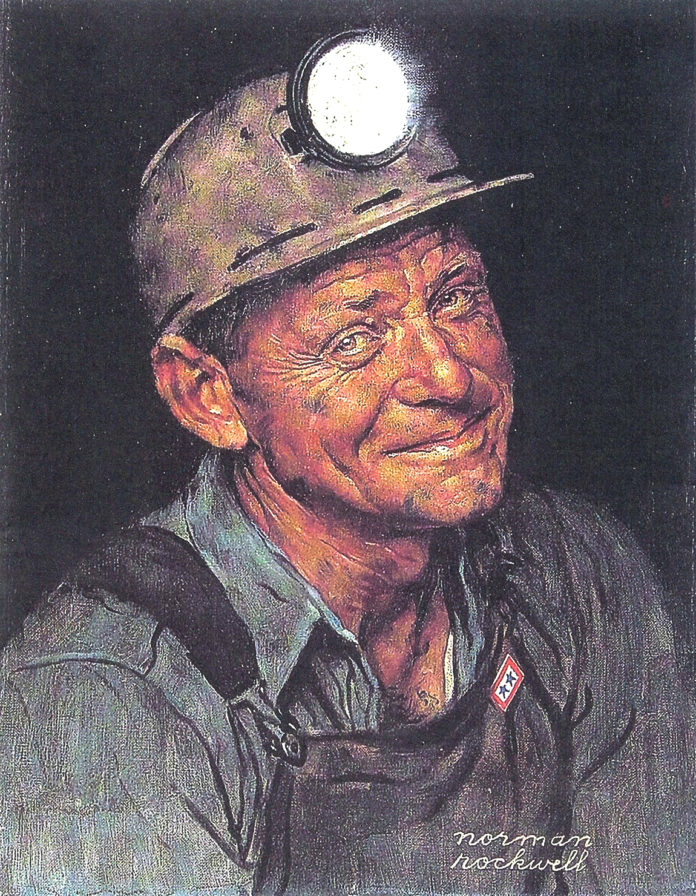Norman Rockwell painted this coal miner in 1943 for use as a World War II poster to support the U.S. effort. The tag line below the miner stated, “We’ll make it hot for the enemy.” The goal of the campaign was to recruit coal miners to boost American production of what was then the nation’s most important fuel.
Norman Percevel Rockwell was born in 1894 in New York City. At age 14, he enrolled in the Chase Art School. His early works appeared in youth publications such as the Boy Scouts of America’s magazine, Boys’ Life, with whom Rockwell enjoyed a long and fruitful relationship of 64 years. He joined the Navy during World War I serving as a military artist.
Beginning in 1916, Rockwell’s pieces appeared on 323 covers of the Saturday Evening Post, over a 47-year period stretching to 1963. That’s more than six straight years of a weekly magazine cover featuring Norman Rockwell’s artwork. The Saturday Evening Post was one of the most widely circulated and influential magazines of the American middle class.
Yet it was during World War II when Rockwell painted his most famous series, Four Freedoms, inspired in a speech by President Franklin D. Roosevelt. Rockwell considered his Freedom of Speech painting to be the best of the four. At a time when more than 15 million men joined the military, six million women assumed jobs in factories to further the war effort. In response, Rockwell created one of his most famous magazine covers was his creation of Rosie the Riveter, a woman in a red scarf and blue work-shirt showing off her bicep while mouthing the phrase, “We can do it!” Rockwell was also commissioned to illustrate more than 40 books, including Tom Sawyer and Huckleberry Finn.
Though a popular artist who appealed to millions of common folks, Rockwell was dismissed by the modern art critics who were enthralled by the fashionable Avant Garde styles of the day, such as Cubism, Surrealism, and Abstract Expressionism. Some of America’s elites disdained Rockwell’s work, calling it bourgeois and kitsch. Much of his art tends towards idealistic and sentimental portrayals of American life that appeal to ordinary citizens. While art museums across the country hold his paintings, the majority are housed in the Norman Rockwell Museum located in Stockbridge, Massachusetts.







